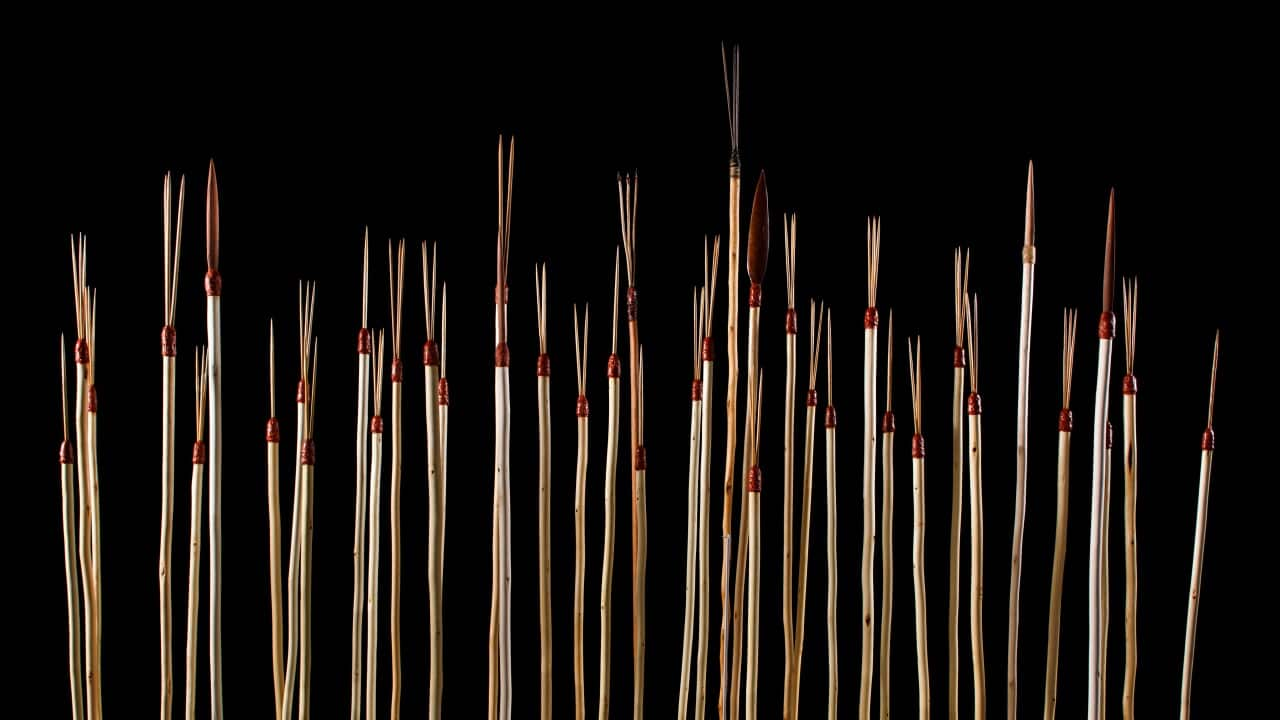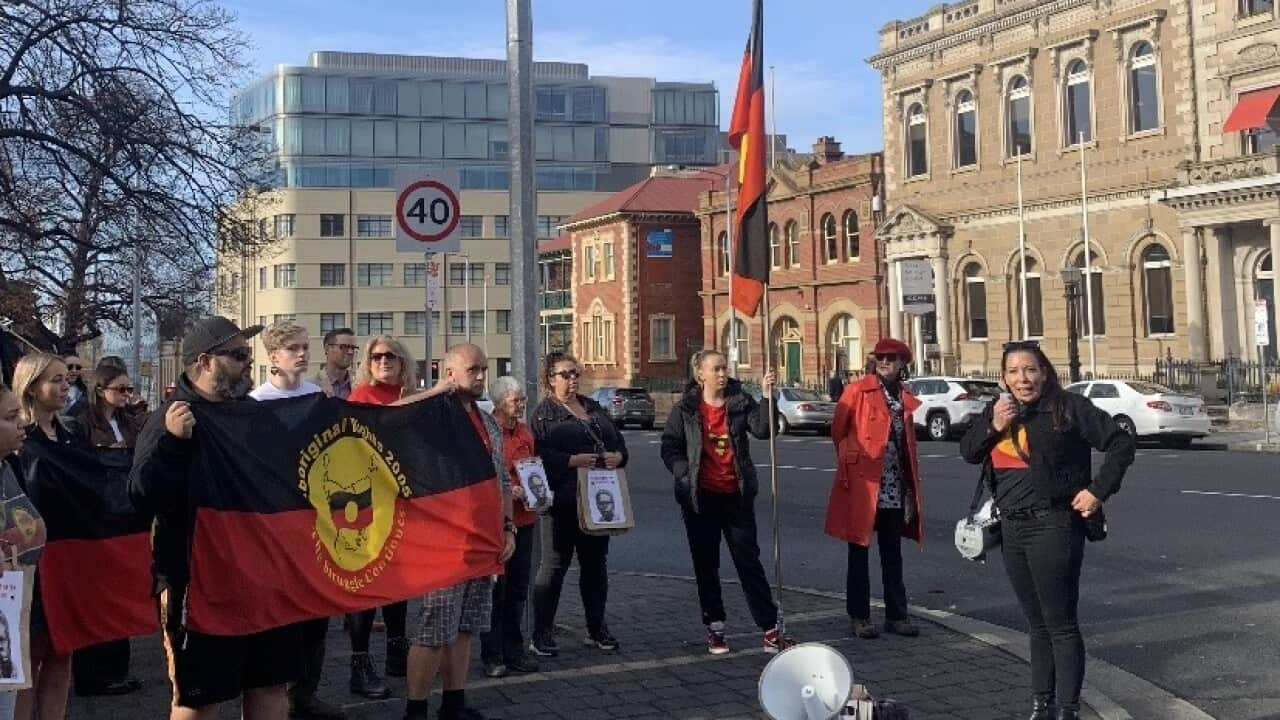The return of cultural heritage items and artefacts back to communities and onto Country is increasing, but there is one place mob may not see their items leave on a permanent basis for a very long time.
The British Museum, in central London in the United Kingdom, is one of the most famous collecting institutions in the world.
Its doors opened in 1759, as the world's first free, national, public museum, but many items acquired for its collection did come at a price.
Descendants of those who had their items taken, from all over the world, have spent decades calling on the institution to return beloved artefacts to their homelands.
But it seems once something passes through the stately doors of the museum they seldom come back out.
In its collection, there are thought to be almost 8 million objects, but only 80,000 are on public display at any one time; just 1 per cent of its total collection.
From Indigenous Australia alone, there are thought to be more than 6,000 items.
Most of these cultural significant items, particularly at the British Museum, are in storage in the basement.
Items deemed to be more culturally and historically significant are on display, to be viewed by those who can make the trip to London.
Why can't they just give it all back?
Whether it's the Parthenon marbles of Greece, the Benin Bronzes of Nigeria, or the Gweagal shield from Kamay; calls are coming from grassroots activists through to the highest levels of governments to return these items to the descendants of their original custodians.

The Benin Bronzes were created in the 16th Century in the West African Kingdom of Benin. The bronzes were stolen during the violent British occupation of the region in 1897. Source: Getty / Leon Neal
It's called The British Museum Act 1963.
The Act effectively bars the museum from 'disposing' of items unless it is a duplicate, the object is unfit to be kept in the museum or the object "has become useless for the purposes of the Museum by reason of damage, physical deterioration, or infestation by destructive organisms".
Despite calls to amend the act or make an exception, the UK government and those who believe the items should stay in the museum, rely on a few main arguments.

There is no record of how the shield came to the collection at the British Museum, but the museum says it was likely sent to London between 1790 and 1815. Credit: British Museum
But, it was found last year that around 1,800 items held in the collections of the British Museum were damaged or stolen over a ten year period.
The Parthenon marbles were also damaged in cleaning in the 1930s.

Greece says the Parthenon Marbles were obtained illegally and has demanded they be returned. The British Museum disputes this claim, asserting the marbles were acquired under an agreement between Lord Elgin and the Ottoman Sultan in 1801. Source: Getty / Mike Kemp/In Pictures
This is only partly true and only applies to those who can travel to London to see the items in real life. This thinking alienates the very communities the items originated from - their true custodians and caretakers.
In response to demands from Greece to return the Parthenon marbles, The Standard reported that the British government and the British Museum said returning the marbles would set a precedent, thus emptying museums of their collections.
However, polls show the British public is in favour of their return home.
There are rumours of a long-term loan system in which the marbles would be displayed in Greece.
Where does that leave us now?
The British Museum has undertaken work to identify Aboriginal and Torres Strait Islander artefacts and ancestral remains held in institutions across the United Kingdom and Ireland.
The project, led by the museum, supported by the Australian Research and involving Indigenous research fellows, identified approximately 39,000 objects held in 70 museums.
Through collaborating with Aboriginal communities, the museum has been able to discover and explore new research areas and unveil more information about objects held in collections across the UK and Ireland.
Last year, Politico reported the Australian government and the UK government were negotiating the return of items.
Through the advocacy of mob, facilitated by organisations like the Australian Institute of Aboriginal and Torres Strait Islander Studies, and alongside the Australian High Commission in London, items held by other institutions are being returned in a collaborative and respectful way.
Just last month community members and direct descendants took part in an emotional ceremony for the return of the Gweagal spears taken by James Cook and Joseph Banks at first contact.
Last year, shell dolls were returned to the Anindilyakwa community from Manchester Museum.
In both instances tears were shed and the relief and gratitude from the communities was palpable.
When it comes to the Gweagal shield, which was taken from the Kamay area and is now held in the British Museum, mob have been advocating for its return for decades, and beyond an offer of a loan, conversations remain ongoing.
Speaking about the shield in Cambridge at the return of the Gweagal spears, Noeleen Timbery of the La Perouse Aboriginal Land Council said the community is patient.
"We're really happy to have those conversations and we're happy to have those conversations with a lot of museums and institutions," Ms Timbery said.
"The shield is one object... it does hold some cultural significance.
"I understand all of the different arguments around the shield and because it doesn't have a concrete connection to Cook and the Endeavour voyage, and we're not really sure how it was collected and where it was collected from, that gives us some questions, but it's still a really powerful cultural object and for us it hasn't lost that cultural significance.
"So, if we look at it that way then yes it should come home."
Unless the UK government agrees to change the British Museum Act 1963, thousands of objects will remain where they are for the foreseeable future - half a world away from their homelands.












